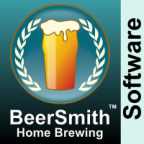Learn how to brew better kettle sours then make your own at home with this all grain recipe.
The post All Grain Recipe: Zilwaukee Bridge Bruin appeared first on Beer & Brewer.
Learn how to brew better kettle sours then make your own at home with this all grain recipe.
The post All Grain Recipe: Zilwaukee Bridge Bruin appeared first on Beer & Brewer.
 This week I take a look at the various versions and options available for using BeerSmith to develop your beer, mead, wine and cider recipes. This list is current as of mid 2021 following the release of BeerSmith 3.2 desktop and BeerSmith Web. BeerSmith Versions and Platforms BeerSmith Desktop – The BeerSmith desktop program, currently […]
This week I take a look at the various versions and options available for using BeerSmith to develop your beer, mead, wine and cider recipes. This list is current as of mid 2021 following the release of BeerSmith 3.2 desktop and BeerSmith Web. BeerSmith Versions and Platforms BeerSmith Desktop – The BeerSmith desktop program, currently […] Hops get all the attention—all the fame, puns and glory while yeast does almost all the work. Hops dominate label space, and varieties like Cascade, Strata and Citra are practically house-hold names, thanks to the seemingly unquenchable demand for every category of IPA. Yet basic beer ale yeast Saccharomyces cerevisiae is abstract to most people, […]
The post Yeast, A Romance Story appeared first on CraftBeer.com.
Redfern and Hobart venues nominated in 35th Dulux Colour Awards.
The post Atomic, Cascade finalists in design awards appeared first on Beer & Brewer.
Seven Latino men gathered on a Hacienda Heights driveway on a warm Southern California night. Shiny homebrewing equipment filled the garage so the fledgling craft brewers stood in the car port—pint glasses in hand—sharing names, hometowns and brewing experiences. The SoCal Cerveceros homebrew club was born. “We didn’t really know what it was going to […]
The post SoCal Cerveceros, America’s Largest Latino-Based Homebrew Club, Is Making Its Mark appeared first on CraftBeer.com.
 Scott Mast and Chris Vogel join me this week to discuss Great Lakes proprietary hops and the resurgence of hop growing in the Midwestern US. Subscribe on iTunes to Audio version or Video version or Spotify or Google Play Download the MP3 File– Right Click and Save As to download this mp3 file. Your browser […]
Scott Mast and Chris Vogel join me this week to discuss Great Lakes proprietary hops and the resurgence of hop growing in the Midwestern US. Subscribe on iTunes to Audio version or Video version or Spotify or Google Play Download the MP3 File– Right Click and Save As to download this mp3 file. Your browser […]  This week I take a look at how you can use a blend of hop varieties rather than a single variety to maximize your hop flavor and aroma. Why Blend Your Hops While brewers often use different hop varieties for boil hopping, whirlpool hopping and dry hopping, I was not that familiar with the technique […]
This week I take a look at how you can use a blend of hop varieties rather than a single variety to maximize your hop flavor and aroma. Why Blend Your Hops While brewers often use different hop varieties for boil hopping, whirlpool hopping and dry hopping, I was not that familiar with the technique […] BentSpoke and Malt Shovel combine again but release comes in cans for first time.
The post New BentShovel beer continues 30 year bond appeared first on Beer & Brewer.
 This week I take a look at one of Germany’s most popular beer styles, the light lager known as German Helles. Helles is a traditional German Lager produced primarily in Southern Germany (Bavaria) around Munich. The word “hell” in German can be roughly translated as “pale, light or bright” in English. The History of Helles […]
This week I take a look at one of Germany’s most popular beer styles, the light lager known as German Helles. Helles is a traditional German Lager produced primarily in Southern Germany (Bavaria) around Munich. The word “hell” in German can be roughly translated as “pale, light or bright” in English. The History of Helles […] Brewery looking to the positives as their roller coaster taproom journey nears its end.
The post The silver lining of Deeds Brewing’s long wait appeared first on Beer & Brewer.
The Frida XPA was brewed in recognition of International Women’s Day.
The post Reckless throw down collab with Akasha appeared first on Beer & Brewer.
Sydney Brewery’s Pilsner wins best in show at Queensland’s top beer awards.
The post The secret to the success of the quiet achievers appeared first on Beer & Brewer.
Growth in sales is attributed to people buying local and drinking less but better.
The post COVID-19 accelerates off-premise craft cider sales appeared first on Beer & Brewer.
 Chris White joins me this week to discuss how White Labs produces yeast for commercial brewers and home brewing. We discuss everything from his yeast bank to production and packaging. Subscribe on iTunes to Audio version or Video version or on Google Play Download the MP3 File– Right Click and Save As to download this […]
Chris White joins me this week to discuss how White Labs produces yeast for commercial brewers and home brewing. We discuss everything from his yeast bank to production and packaging. Subscribe on iTunes to Audio version or Video version or on Google Play Download the MP3 File– Right Click and Save As to download this […] 
Calcium | Chloride | Sulfate | Sodium | Magnesium | Carbonate |
120 | 150 | 100 | 20 | 5 | 100 |